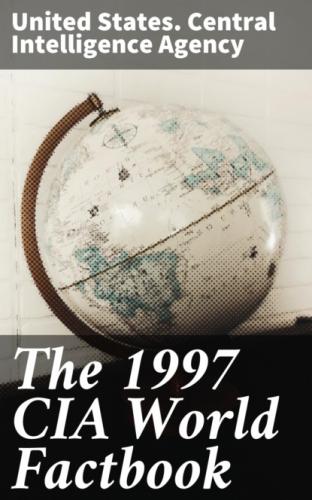Age structure: 0–14 years: 43% (male 5,201,585; female 5,003,503) 15–64 years: 54% (male 6,680,687; female 6,208,463) 65 years and over : 3% (male 341,301; female 302,546) (July 1997 est.)
Population growth rate: 4.48% (1997 est.) note: this rate reflects the continued return of refugees
Birth rate: 42.72 births/1,000 population (1997 est.)
Death rate: 17.78 deaths/1,000 population (1997 est.)
Net migration rate: 19.9 migrant(s)/1,000 population (1997 est.)
Sex ratio: at birth: 1.05 male(s)/female under 15 years : 1.04 male(s)/female 15–64 years: 1.08 male(s)/female 65 years and over: 1.13 male(s)/female total population: 1.06 male(s)/female (1997 est.)
Infant mortality rate: 146.7 deaths/1,000 live births (1997 est.)
Life expectancy at birth: total population : 46.34 years male: 46.89 years female: 45.76 years (1997 est.)
Total fertility rate: 6.07 children born/woman (1997 est.)
Nationality: noun: Afghan(s) adjective: Afghan
Ethnic groups: Pashtun 38%, Tajik 25%, Uzbek 6%, Hazara 19%, minor ethnic groups (Aimaks, Turkmen, Baloch, and others)
Religions: Sunni Muslim 84%, Shi'a Muslim 15%, other 1%
Languages: Pashtu 35%, Afghan Persian (Dari) 50%, Turkic languages (primarily Uzbek and Turkmen) 11%, 30 minor languages (primarily Balochi and Pashai) 4%, much bilingualism
Literacy: definition: age 15 and over can read and write total population: 31.5% male : 47.2% female: 15% (1995 est.)
@Afghanistan:Government
Country name: conventional long form: Islamic State of Afghanistan conventional short form: Afghanistan local long form : Dowlat-e Eslami-ye Afghanestan local short form: Afghanestan former: Republic of Afghanistan
Data code: AF
Government type: transitional government
National capital: Kabul
Administrative divisions: 30 provinces (velayat, singular - velayat);
Badakhshan, Badghis, Baghlan, Balkh, Bamian, Farah, Faryab, Ghazni,
Ghowr, Helmand, Herat, Jowzjan, Kabol, Kandahar, Kapisa, Konar,
Kondoz, Laghman, Lowgar, Nangarhar, Nimruz, Oruzgan, Paktia, Paktika,
Parvan, Samangan, Sar-e Pol, Takhar, Vardak, Zabol
note : there may be two new provinces of Nurestan (Nuristan) and
Khowst
Independence: 19 August 1919 (from UK control over Afghan foreign affairs)
National holiday: Victory of the Muslim Nation, 28 April; Remembrance
Day for Martyrs and Disabled, 4 May; Independence Day, 19 August
Constitution: none
Legal system: a new legal system has not been adopted but all factions tacitly agree they will follow Islamic law (Shari'a)
Suffrage: undetermined; previously males 15–50 years of age
Executive branch: on 27 September 1996, the ruling members of the Afghan Government were displaced by members of the Islamic Taliban movement; the Islamic State of Afghanistan has no functioning government at this time, and the country remains divided among fighting factions note: the Taliban have declared themselves the legitimate government of Afghanistan; the UN has deferred a decision on credentials and the Organization of the Islamic Conference has left the Afghan seat vacant until the question of legitimacy can be resolved through negotiations among the warring factions; the country is essentially divided along ethnic lines; the Taliban controls the capital of Kabul and approximately two-thirds of the country including the predominately ethnic Pashtun areas in southern Afghanistan; opposing factions have their stonghold in the ethnically diverse north - General DOSTAM's National Islamic Movement controls several northcentral provinces and Commander MASOOD controls the ethnic Tajik majority areas of the northeast
Legislative branch: non-functioning as of June 1993
Judicial branch: non-functioning as of March 1995, although there are local Shari'a (Islamic law) courts throughout the country
Political parties and leaders: Taliban (Religious Students Movement),
Mohammad OMAR; Supreme Defense Council of Afghanistan [comprised of
Jumbesh-i-Melli Islami (National Islamic Movement), Abdul Rashid
DOSTAM; Jamiat-i-Islami (Islamic Society), Burhanuddin RABBANI and
Ahmad Shah MASOOD; and Hizbi Wahdat-Khalili faction (Islamic Unity
Party), Abdul Karim KHALILI]; other smaller parties are Hizbi
Islami-Gulbuddin (Islamic Party), Gulbuddin HIKMATYAR faction; Hizbi
Islami-Khalis (Islamic Party), Yunis KHALIS faction; Ittihad-i-Islami
Barai Azadi Afghanistan (Islamic Union for the Liberation of
Afghanistan), Abdul Rasul SAYYAF; Harakat-Inqilab-i-Islami (Islamic
Revolutionary Movement), Mohammad Nabi MOHAMMADI;
Jabha-i-Najat-i-Milli Afghanistan (Afghanistan National Liberation
Front), Sibghatullah MOJADDEDI; Mahaz-i-Milli-Islami (National Islamic
Front), Sayed Ahamad GAILANI; Hizbi Wahdat-Akbari faction (Islamic
Unity Party), Mohammad Akbar AKBARI; Harakat-i-Islami (Islamic
Movement), Mohammed Asif MOHSENI
Political pressure groups and leaders: tribal elders represent
traditional Pashtun leadership; Afghan refugees in Pakistan,
Australia, US, and elsewhere have organized politically; Peshawar,
Pakistan-based groups such as the Coordination Council for National
Unity and Understanding in Afghanistan (CUNUA), Ishaq GAILANI; Writers
Union of Free Afghanistan (WUFA), A. Rasul AMIN; Mellat (Social
Democratic Party), leader NA
International organization participation: AsDB, CP, ECO, ESCAP, FAO,
G-77, IAEA, IBRD, ICAO, ICRM, IDA, IDB, IFAD, IFC, IFRCS, ILO, IMF,
Intelsat, IOC, IOM (observer), ITU, NAM, OIC, UN, UNCTAD, UNESCO,
UNIDO, UPU, WFTU, WHO, WMO, WToO
Diplomatic representation in the US: chief of mission : Ambassador (vacant); Charge d'Affaires Yar Mohammed MOHABBAT chancery: 2341 Wyoming Avenue NW, Washington, DC 20008 telephone: [1] (202) 234–3770, 3771 FAX: [1] (202) 328–3516 consulate(s) general : New York consulate(s): Washington, DC
Diplomatic representation from the US: the US embassy in Kabul has been closed since January 1989 due to security concerns
Flag description: three equal horizontal bands of green (top), white, and black with a gold emblem centered on the three bands; the emblem features a temple-like structure with Islamic inscriptions above and below, encircled by a wreath on the left and right and by a bolder Islamic inscription above, all of which are encircled by two crossed scimitars
Economy
Economy - overview: Afghanistan is an extremely poor, landlocked country, highly dependent on farming and livestock raising (sheep and goats). Economic considerations have played second fiddle to political and military upheavals during more than 17 years of war, including the nearly 10-year Soviet military occupation (which ended 15 February 1989). During the war one-third of the population fled the country, with Pakistan and Iran sheltering a combined peak of more than 6 million refugees. Now, only 750,000 registered Afghan refugees remain in Pakistan and about 1.2 million in Iran. Another 1 million have probably
